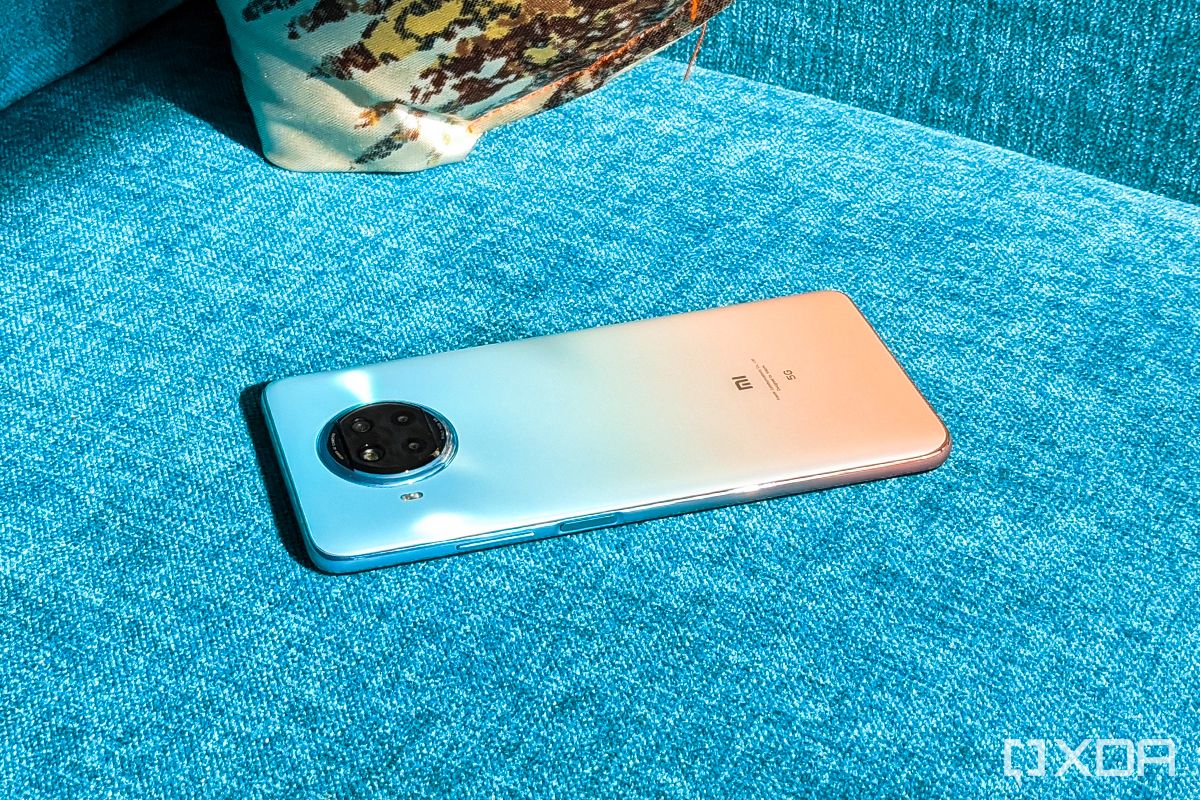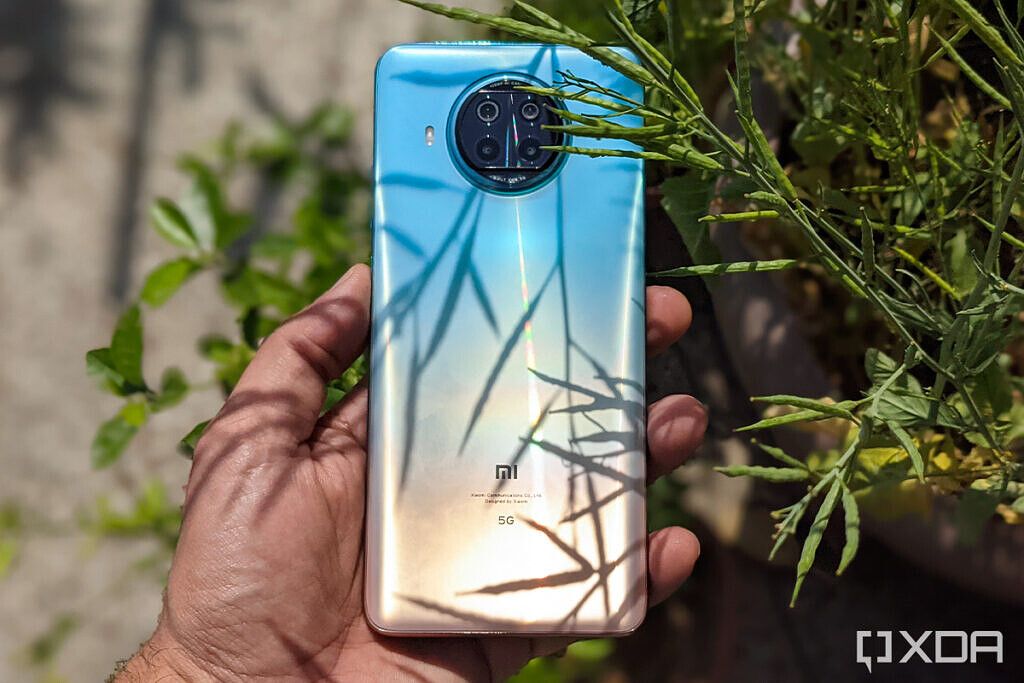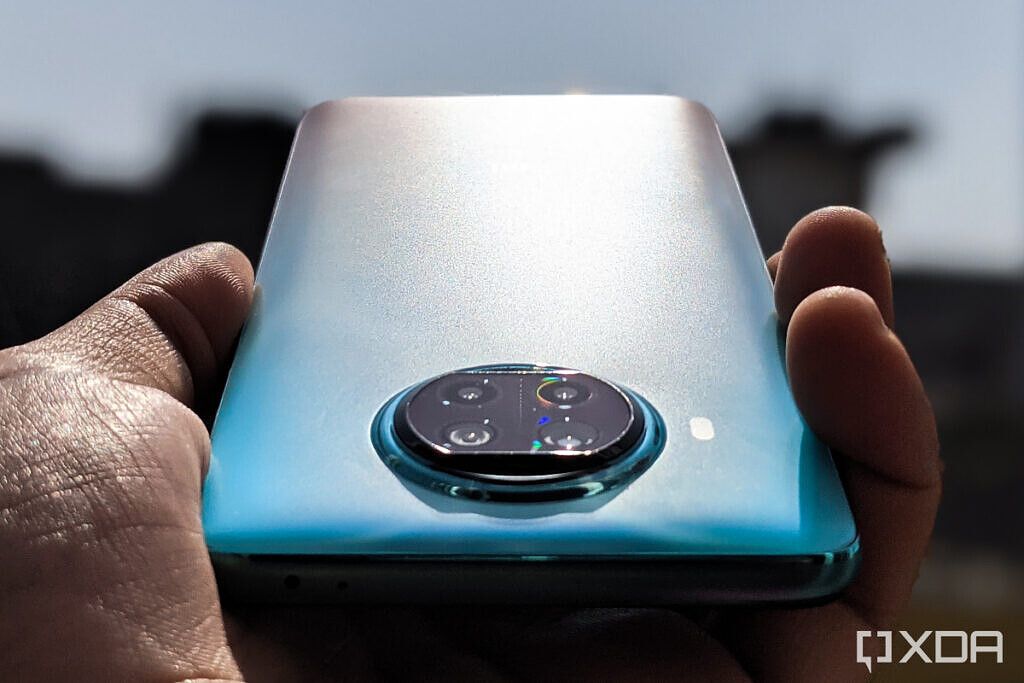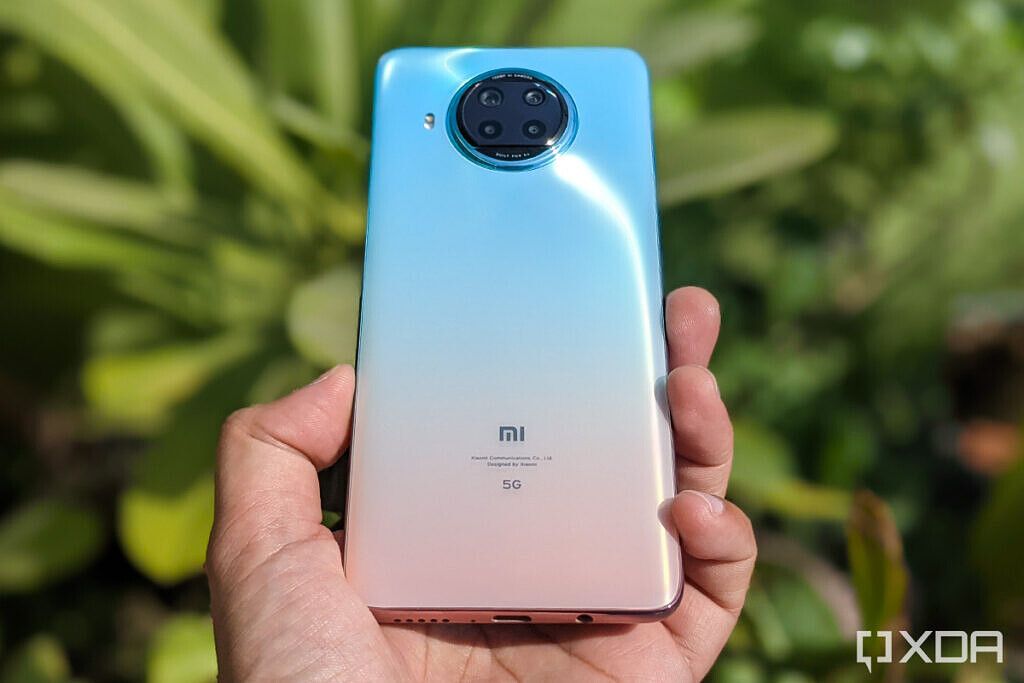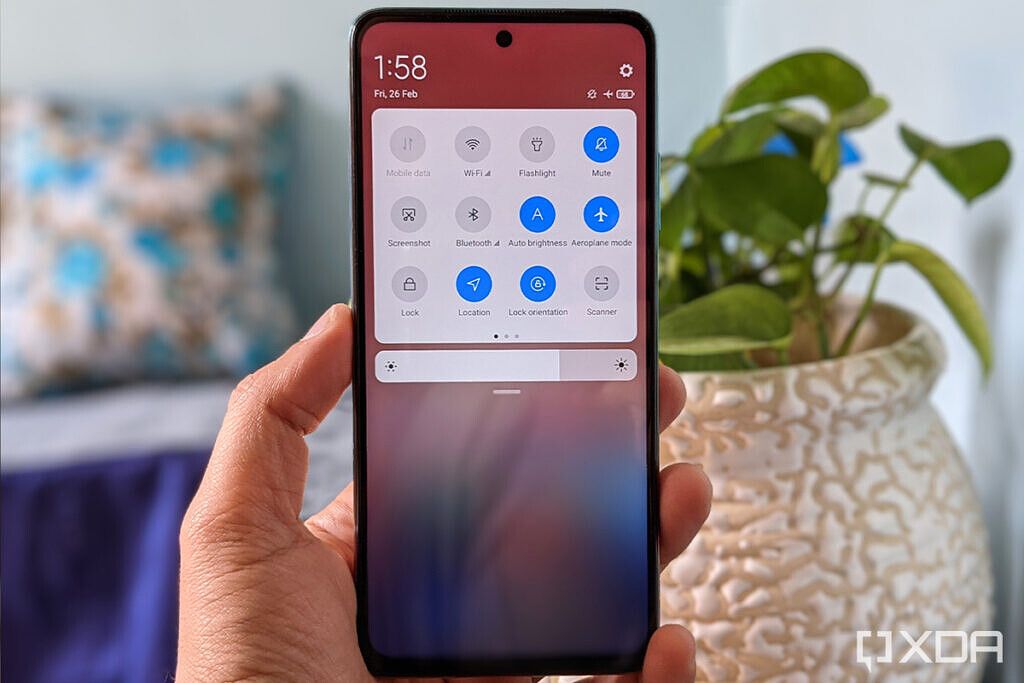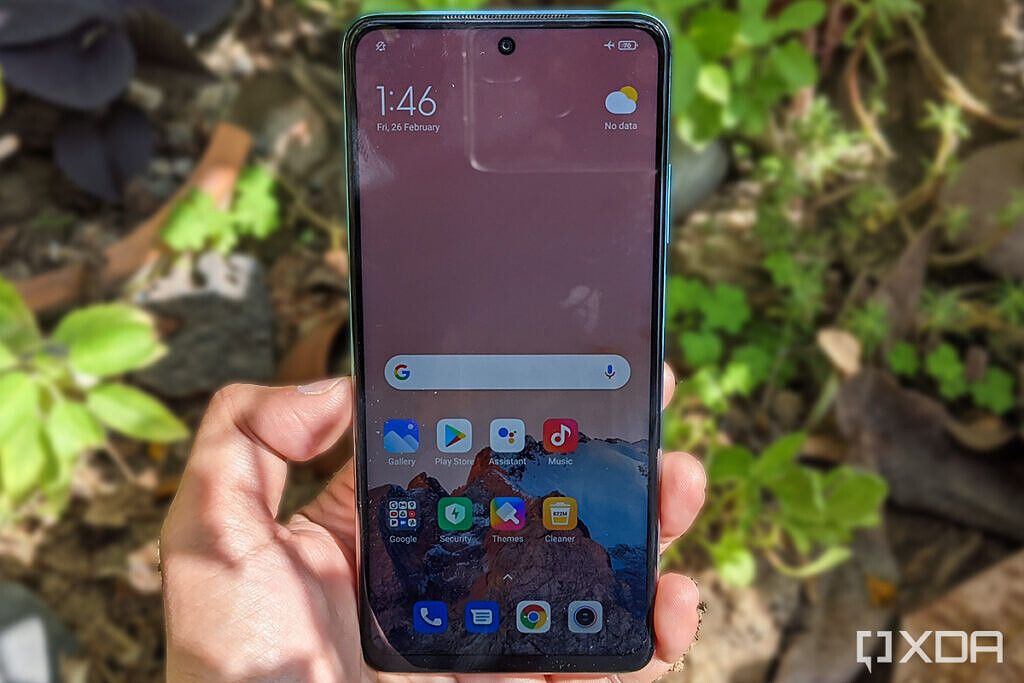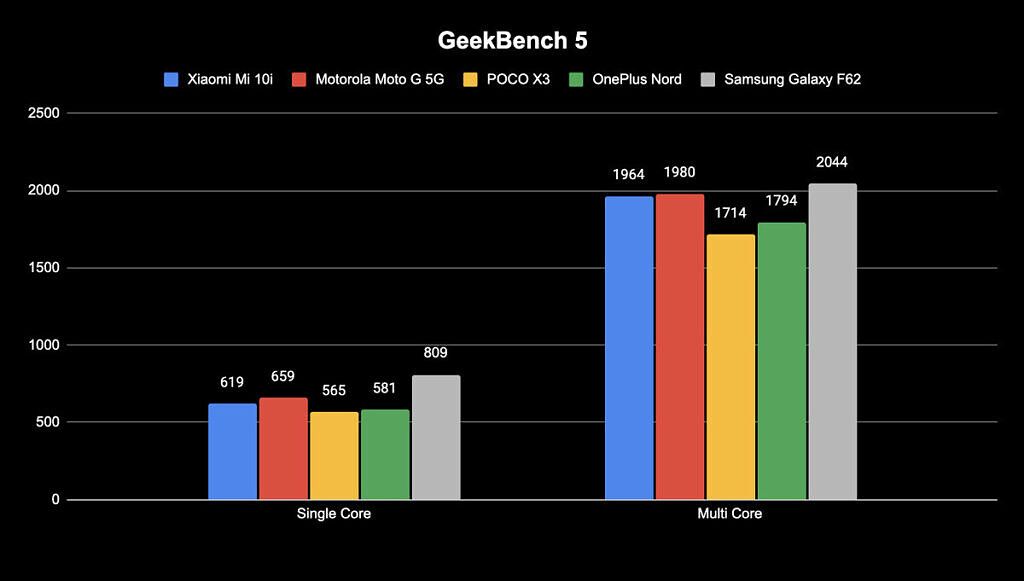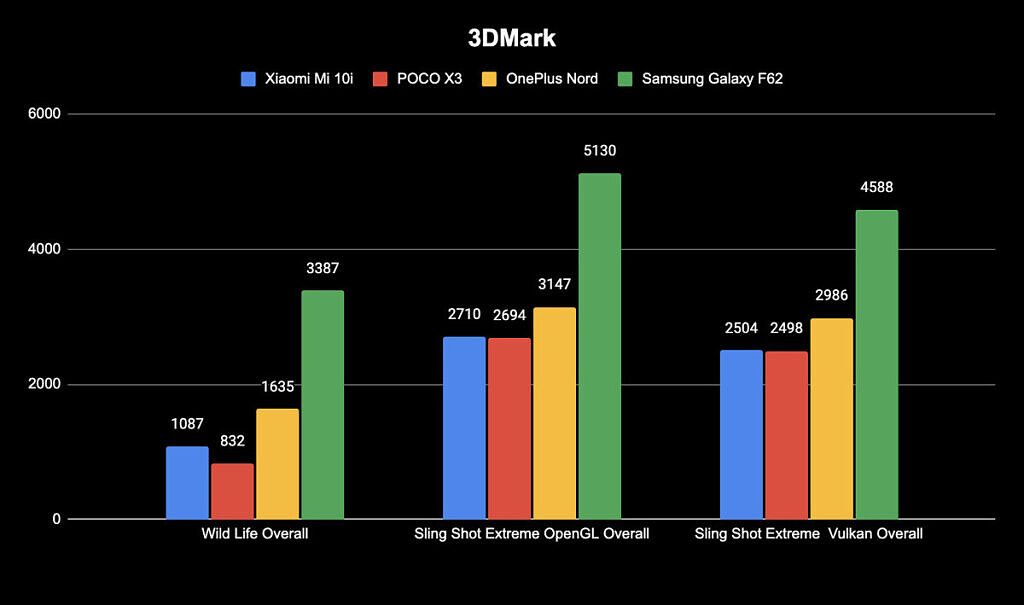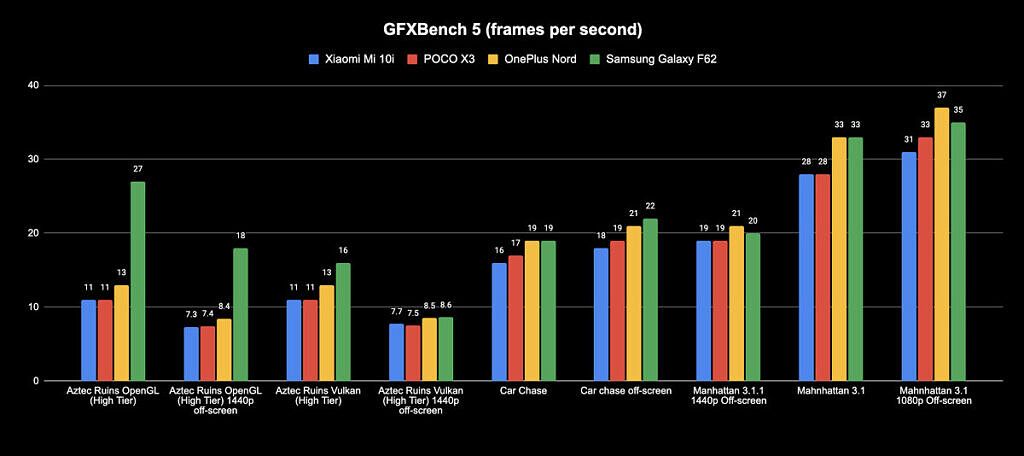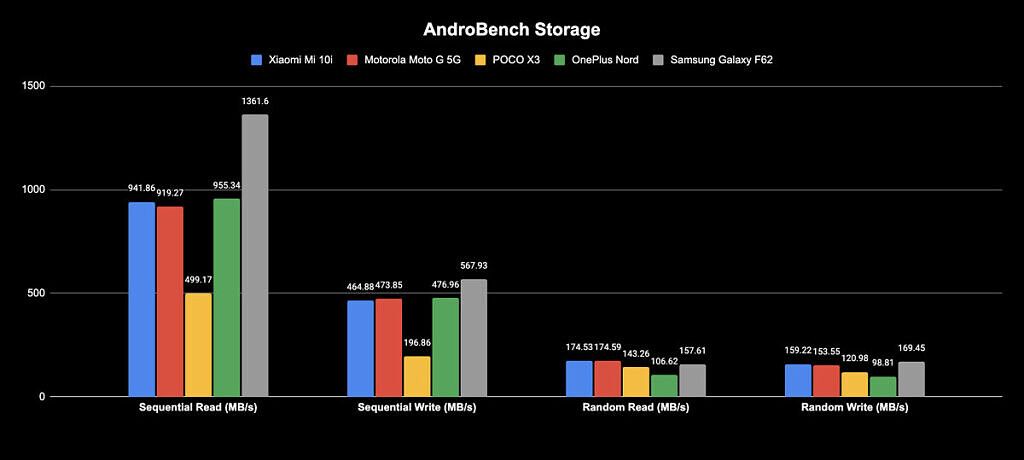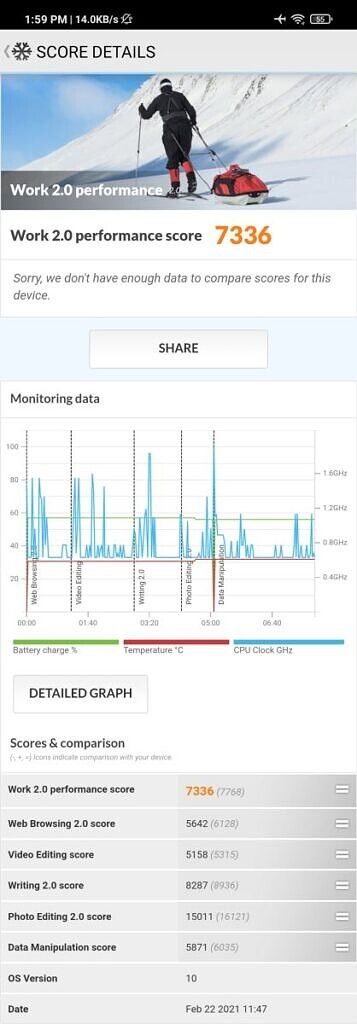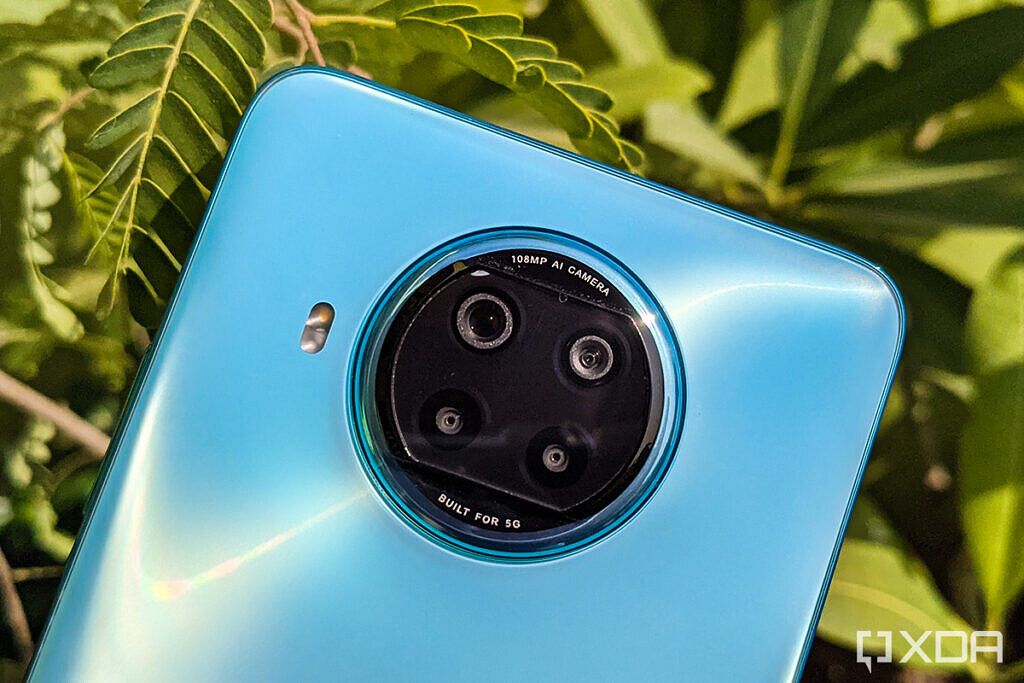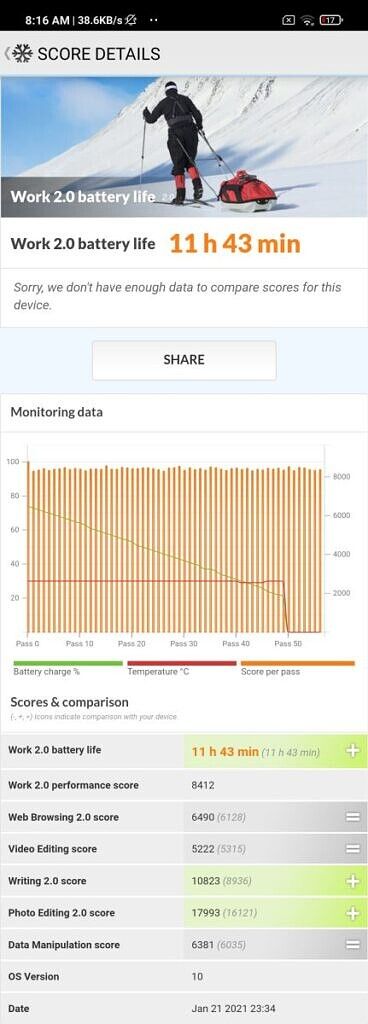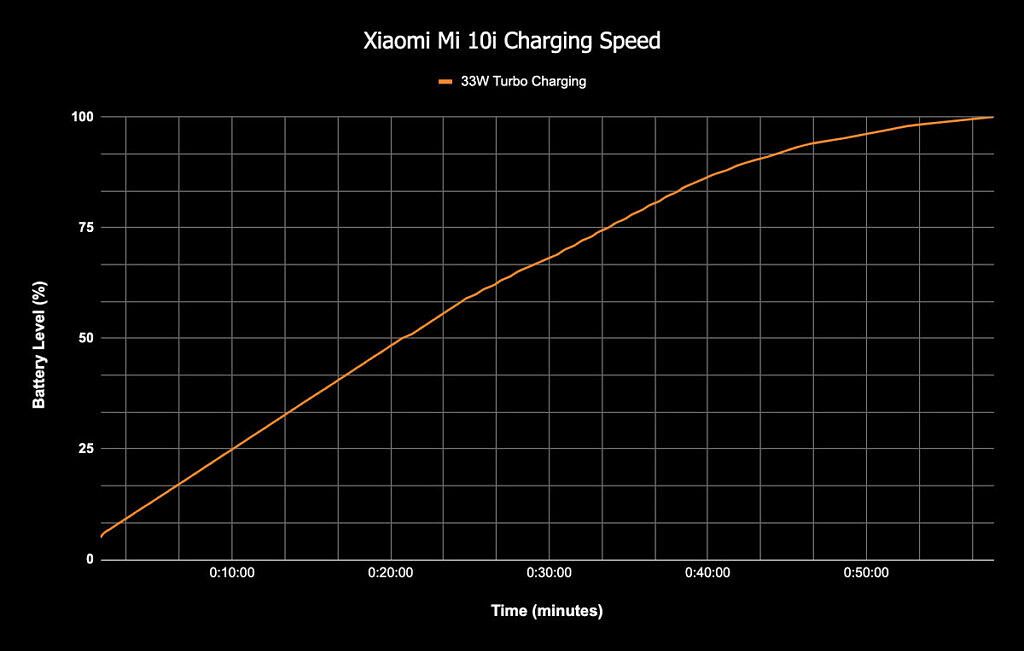Xiaomi's Mi 10i is the latest addition to the company's portfolio in India. Despite its endorsement as a product made especially for India, the Mi 10i mirrors Xiaomi's Mi 10T Lite in terms of the design and specifications — save for the new 108MP camera — and also resembles Xiaomi's Redmi Note 9 Pro 5G. If you can overlook that, the Xiaomi Mi 10i is among the most economical 5G phones that you can buy in India as the country prepares for the era of 5G.
For several years, Xiaomi has had a clear distinction between "Mi" and "Redmi" branded devices. Mi depicts Xiaomi as a premium brand while Redmi earns acclaim for its devices' incredible value for money. However, these boundaries have blurred in the last few years, with Redmi spinning off as an independent entity and vying to associate with a more premium identity. Smartphones like the Redmi K40 series attest to this pursuit. Despite existing supposedly independently, Redmi continues to share resources with the Mi brand. As a result of this intermingling, an assortment of identical devices are named differently to suit different markets.
Since most end-users only need the most value out of their money spent, Xiaomi's confusing naming scheme should be the least of their concerns. However, besides the garbled naming, rebadged products often misalign with a brand's identity. With the Mi 10i, Xiaomi makes some visible compromises that detract from the premium identity of Mi products and make it more fitting for the Redmi Note persona. One exception is the 108MP camera, which might make up for the tradeoffs. If the Mi 10i looks like an interesting option to you, you might want to know about these caveats before taking the plunge.
Before we go into the details, here are the specifications of the Xiaomi Mi 10i:
Xiaomi Mi 10i Specifications
About this review: Xiaomi India loaned us an 8GB+128GB variant of the Mi 10i for review. This review is after almost two months of use. Xiaomi had no input on the content of this review.
Design
The Xiaomi Mi 10i should look familiar to those already using Xiaomi, Redmi, or POCO devices. It follows the companies' usual glass sandwich design with a curved glass back and a flat display. Both — the front and the back of the Mi 10i — are protected by Gorilla Glass 5. Although the frame on the sides is made of plastic, its metallic finish with glossy champers gives it a metallic appearance.
There is a circular camera bump on the back that holds a quad camera setup. The camera bump is reminiscent of the POCO X3 and — to some extent — the Redmi K30 Pro (rebadged as POCO F2 Pro), but it is more compact on the Mi 10i than those devices. The 108MP camera does make the camera bump noticeably thick, and you will need a case to prevent the camera glass from scuffing from sitting on flat surfaces.
The most exciting element of the Mi 10i's design is its color, especially the Pacific Sunrise variant. We have the same variant for review, and it features a combination of two contrasting colors fusing into each other with a subtle gradient. As the name suggests, this color combo can remind you of captivating natural occurrences, such as sunrise or sunset across a sea or ocean.
While a marine sunset is a vision that Xiaomi has for this design, I am reminded of ice cream covered with jelly by these dynamic colors. It is safe to say that the design is open to interpretation and should inspire you — at least once — to ruminate the source of its inspiration.
[sc name="pull-quote" quote="Mi 10i's Pacific Sunrise follows an artistic approach inspired by nature."]
When sunlight falls on this back, it diffuses and scatters like a spotlight, and that helps bring attention to the smartphone. Meanwhile, the frosted glass back prevents this diffused light from getting reflected off the surface. Under the Mi logo on the back, there is a noticeable badge for 5G, clearly defining this as a device that is ready for 5G connectivity even though the spectrum for the network is not yet available to the users in India.
The Mi 10i is a massive device to hold and use, especially owing to the large display, which we will discuss in the following section. In comparison to the POCO X3, however, the phone actually feels much more convenient to hold. It is slimmer (9mm), and there are no sharp edges. The curved back makes the Mi 10i easy to hold despite its breadth, and you can also use a case to improve your grip further. Weighing at 215 grams, the Mi 10i is not a light phone, but the weight is distributed very well, and you do not feel that the mass is concentrated in any one area.
The following features are placed along with the side frame:
- a side-mounted fingerprint scanner and a volume rocker on the right side,
- a 3.5mm headphone jack, a USB Type-C port, primary microphone, and a loudspeaker at the bottom,
- a slot for SIM and microSD cards on the left, and
- a secondary noise-canceling microphone and an IR blaster on the top.
While one speaker is placed at the bottom of the smartphone, another is nestled in the earpiece, giving the Mi 10i a stereo audio setup.
Overall, the design of Mi 10i feels both — familiar and refreshingly new — at the same time, thanks to the conventional layout alongside the enticing Pacific Sunrise color. The other aspect of this design is the large display that we discuss in the next section.
Display
The Mi 10i is equipped with a 6.67-inch LCD with a hole-punch along the center of the top edge. While Mi 10i is a rebadged device, the display has also appeared on a host of other Redmi and POCO devices in the past. These devices include the Redmi Note 9 Pro (rebadged as the Redmi Note 9S for Europe), Redmi Note 9 Pro Max, POCO X2, and POCO X3.
The display on the Mi 10i is nearly identical to what we found during our Redmi Note 9 Pro review last year. The only differentiating factor is that while the latter features a 60Hz refresh rate, the Mi 10i's display supports up to 120Hz refresh rate. The smartphone also inherits dynamic refresh rate switching from the Mi 10T Pro. This means the refresh rate of the display changes actively in sync with the frame rate of the content running on it. This synchronization between the frame rate and the display refresh rate helps minimize frame tearing.
While the Mi 10i does not match up the frame rates and the refresh rate for every unitary step, Xiaomi has defined six different refresh rate values to cover most of the different types of content we commonly encounter. These defined values include 30Hz, 48Hz, 50Hz, 60Hz, 90Hz, and 120Hz. Unlike Samsung's adaptive refresh rate that changes according to the app, Xiaomi's adaptive refresh rate changes in real-time with the changes in whatever is being played on the display.
[sc name="pull-quote-left" quote="Mi 10i's display leaves much to desire. The refresh rate bug worsens the feeling."]
We encountered a bug on the Mi 10i, limiting the smartphone's display to a 50Hz refresh rate if the screen is not touched for longer than a minute. The active refresh rate value was checked in realtime using the Power Monitor tool in MIUI developer options. This may impact your viewing experience and defeat the purpose of the adaptive refresh rate synchronization feature. Furthermore, the bug also limited the phone's performance in synthetic benchmarks like PCMark, addressed in this review later. The active refresh rate sync resumes the moment you touch the display. This bug was reported to Xiaomi India, but we have yet to receive an update from them on this.
While the Mi 10i matches up to Mi 10T Pro when it comes to the active refresh rate switching, but it is leagues behind the Mi 10T Pro in terms of display quality. In fact, its Redmi Note persona seeps through the Mi branding.
The display is decently bright but shies away from performing incredibly. For outdoor usability, the Mi 10i comes with "Sunlight Display 3.0," but despite that, you might have to struggle with obstructive reflectivity, especially in strong sunlight. Compared side-by-side, the POCO X3's display appears slightly brighter, and that is something we also noted in our Redmi Note 9 Pro review.
In terms of colors, the Mi 10i's display feels like any rudimentary IPS display. Xiaomi claims support for 84% of the NTSC color gamut. Even on the "Saturated" color mode, this display appears underwhelming and lacks that punchy color profile we witness on a host of other phones we see in this price range. Needless to say, many phones in this price bracket actually come with an AMOLED display. Anyone buying the smartphone for a good multimedia experience is bound to be easily swayed by an AMOLED display, even if that translates to some letdown in terms of performance. What makes it even more disappointing is the fact that the Redmi K20 (rebadged as Xiaomi Mi 9T) was launched with a much better display in India less than two years ago at a lower price.
If you look at the Mi 10i in isolation, the display may not stand out as exceptional. But, it is adequate for daily usage without any benchmark or expectations. If you are buying the Mi 10i solely for gaming or performance and do not expect a great value out of the screen, you should be delighted with its high refresh rate capabilities. Paired with the Snapdragon 750G chipset that powers the Mi 10i, you should be able to enjoy smooth and lag-free gaming for titles that don't need a lot of processing power.
In comparison, the Redmi Note 10 Pro/Pro Max launched comes with a brighter 120Hz AMOLED display — a first for the Redmi Note series. Read more about this display in our Redmi Note 10 Pro review.
Talking about the processing power, the chipset that powers the Mi 10i is positioned as an intermediate between the Snapdragon 732G and the Snapdragon 765G. The next section discusses the smartphone's performance and the various aspects we have noted during the review.
Performance
Xiaomi projects the Mi 10i as a serious performing mid-range, and so, there are expectations for reliable performance. The smartphone is powered by the recently launched 5G-enabled mid-range mobile platform from Qualcomm, i.e., Snapdragon 750G, which was announced in September last year. The Snapdragon 750G, as you would expect from its naming, is pivoted between the Snapdragon 732G and the Snapdragon 765G. The Xiaomi Mi 10i is not the first smartphone to be powered by the chipset, but its twin sibling — the Mi 10T Lite — was.
The Qualcomm Snapdragon 750G is an 8nm SoC with eight cores arranged in a big.LITTLE architecture. It is equipped with two Qualcomm Kryo 570 performance cores based on ARM's Cortex-A77 design and clocked at 2.2GHz. For power-efficiency, the Snapdragon 750G comes with six efficiency cores based on ARM's Cortex-A55 CPU cores with a clock speed of 1.8GHz. It is worth noting that the Snapdragon 765G and the newer Snapdragon 768G still embrace the older Cortex-A76 design and should, in theory, lag behind the Snapdragon 750G. However, the two notably superior chipsets feature a 7nm design, which may give them some leeway. The updated design of the performance core can lead to a notable lead in single-core performance, and we will put that to the test using synthetic benchmarks on the Xiaomi Mi 10i.
When it comes to graphics, the Qualcomm Snapdragon 750G features the Adreno 619 GPU. Once again, the Adreno 619, which is limited to the Snapdragon 750G, is, by the fortune of its naming, destined to sit between the Adreno 618 on the Snapdragon 730/730G, 720G, and 732G, and the Adreno 620 on the Snapdragon 765G and 768G. As per Qualcomm, the GPU is designed to bring a 10% boost in graphics performance over the Adreno 618. Notably, the Adreno 620 on the Snapdragon 765G/768G is touted to bring a 20% increment over the Adreno 618, i.e., twice as much as the Adreno 619.
While we will be testing the graphics capabilities of the Mi 1oi using synthetic benchmarks, it is good to know that the chipset supports some of Qualcomm's Elite Gaming features such as Game Color Plus, Adreno Updateable GPU Drivers, and Adreno HDR Fast Blend. The ability to update GPU drivers shall allow OEMs to make the most out of the GPU's hardware, even a few years after its release.
For 5G connectivity, the Snapdragon 750G employs the Qualcomm Snapdragon X52 modem, which is also available on the Snapdragon 765G and 768G. The Snapdragon X52 modem by Qualcomm supports mmWave and sub-6GHz frequencies over SA and NSA networks.
We ran some standard synthetic benchmarks along with XDA's in-house custom benchmarks to quantify the performance of the Xiaomi Mi 10i. We have also included the POCO X3 powered by Snapdragon 732G, OnePlus Nord powered by Snapdragon 765G, and Samsung Galaxy F62 running Exynos 9825 for comparison with either similarly powered or similarly priced smartphones.
Synthetic Benchmarks
Geekbench
The newer Kryo 570 performance cores based on ARM's Cortex-A77 on the Snapdragon 750G help Mi 10i sideline not only the POCO X3 with Snapdragon 732G but also the OnePlus Nord with Snapdragon 765G. The same pattern can be seen on both single-core and multi-core tests of the CPU-centric GeekBench 5 benchmark. Interestingly, despite the same chipset, Mi 10i scores lower than the Moto G 5G (aka Moto One 5G Ace) on both the test, indicating a slightly better user experience on the latter.
[sc name="pull-quote-right" quote="Snapdragon 750G outshines the Snapdragon 765G in CPU performance."]
Meanwhile, the Samsung Galaxy F62's Exynos 9825 — which is a 7nm chipset with two high-performance cores at 2.7Ghz, two Cortex-A75 based cores at 2.4GHz, and four Cortex-A55 based cores — outperforms the Mi 10i in single-core tests by a huge gap, but the margin decreases substantially in terms of the multi-core scores.
3DMark
In the GPU-centric 3DMark, we see the expected GPU performance. Mi 10i with Adreno 619 lies in the middle of POCO X3 with Adreno 618 and OnePlus Nord with Adreno 620 GPUs. Unsurprisingly, Samsung Galaxy F62 with a Mali G76 GPU outshines others by more than two-times the points scored by OnePlus Nord in certain tests.
GFXBench
In the multivariate GPU-centric benchmark, GFXBench, we see a similar performance trend in the initial test. Notably, there is a tiny margin in the scores earned by Mi 10i and the POCO X3. In contrast, the OnePlus Nord performs consistently better. It is surprising to see the POCO X3 consistently score equally or outperform the Mi 10i and the only viable explanation for this is GPU throttling on the Mi 10i. Talking of throttling — despite the initial sprint, Galaxy F62 falls flat and performs only as well as the OnePlus Nord.
AndroBench
When it comes to benchmarking storage transfer speeds, the Mi 10i is in the same ballpark as the OnePlus Nord and Moto G 5G in sequential read and write speeds. It is worth noting that Xiaomi Mi 10i comes with UFS 2.2 flash storage while the other two devices still feature the older UFS 2.1 storage. The UFS 2.2 standard brings an additional feature called Write Booster to increase the write speeds compared to UFS 2.1. However, we do not see that translate to any actual increase in the write speeds.
The Galaxy F62 once again takes the lead due to its UFS 3.0 storage with much higher sequential read and write speeds.
PCMark Work 2.o
When it comes to PCMark's Work 2.0 — a benchmark that emulates real-life tasks such as text or media editing, web browsing, writing, and data manipulation, the Mi 10i underperforms. Even though older mid-rangers such as the POCO X2 score almost as high as 9,800 points in this benchmark, Xiaomi Mi 10i is limited to less than 7,500 points. One possible explanation for this curtailed performance is the refresh rate bug we mentioned above. While some of the tests in the Work 2.0 benchmark include videos rendering at 60fps, the bug limits this output at the display to just 50fps, resulting in lower performance in the benchmark than what the smartphone is capable of.
CPU Throttling Test
While we saw the possibility of a potentially throttled GPU performance while looking at the GFXBench scores above, we also ran a benchmark specifically to test the CPU's throttling. For this, we used the CPU Throttling Test app in which threads written in C are constantly repeated for a set time period. The impact of this continuous load is quantifying by comparing the average and the minimum performance per second.
We ran the test in three different scenarios for 30 minutes each. The device was set aside and allowed to cool down between each of these tests. In the first scenario, we ran the benchmark in standard conditions. After about 15 minutes, there was a visible drop in the performance, and it finally translated to 85% throttling compared to its peak performance.
In the next scenario, we whitelisted the CPU Throttling app in MIUI's Game Turbo app to see if throttling reduces when Xiaomi's gaming mode governs the performance. The feature does not have a noticeable improvement to the peak performance, but the throttling is reduced. Using Game Turbo on Mi 10i, the performance is throttled to 91% of the peak performance.
Lastly, we ran the same test for 30 more iterations while charging the smartphone but without Game Turbo. Since charging adds heat to the system, it contributes to the device's decision to throttle performance. When the phone is charged to around 90% of the battery capacity, the Mi 10i is throttled to 71% of the peak performance.
Apart from the major decline in performance while charging the phone, the throttling values in the first two scenarios are pretty much in line with what we expect from other smartphones in this category.
XDA's Custom Benchmarks
In addition to the standard benchmark tests, we tested the performance of the Xiaomi Mi 10i using a couple of XDA's in-house benchmark tests. Unlike the synthetic benchmarks, these are developed to test any device's performance in real-life scenarios such as scrolling and app launching. The first of these tests is used to determine how well the Mi 10i can sustain an optimal frame rate output for the 120Hz display.
Custom Jank Test
The XDA UI Stutter and Jank test is a modified version of JankBench, an open-source benchmark by Google. This benchmark includes various tests to determine the smartphone's performance by replicating actions we commonly use or come across in most applications.
These tasks include scrolling through a ListView with text, scrolling through a ListView with images, scrolling through a grid view with a shadow effect, scrolling through a low-hitrate text render view, scrolling through a high-hitrate text render view, inputting and editing text with the keyboard, repeating overdraws with cards, and uploading bitmaps.
The time taken per frame by the smartphone is noted, and the same is plotted in the form of vertical bars against reference values, which are indicated by colored lines. These values correspond to the ideal time taken by the system to draw and present frames in line with a specific refresh rate. For example, a 60Hz refresh rate implies that a system draws and presents 60 frames onto the display every second. This means that each frame takes 16.67 milliseconds (ms) to render. Similarly, a system should take 11.11ms to render frames on a 90Hz display and 8.33ms on a 120Hz.
Any frame that breaches the horizontal line is considered a stutter with respect to that particular refresh rate value. Since the Mi 10i supports a maximum of 120Hz, that is the value we aim to test for the device.
We recorded the following observations while running the jank tests on Xiaomi Mi 10i:
- Mi 10i visibly struggles on the ListView text scrolling tests, with nearly 19% of the frames missing this mark. Besides, 4% of the frame miss the 90Hz mark too.
- On the ListView image scrolling test, the Mi 10i performs relatively better, with about only 5% of the frames missing the 120Hz mark and nearly 2% missing the 90Hz mark.
- About 11% and 18% of frames miss the 120Hz mark on the Low hit rate and High hit rate render tests, respectively. For 90Hz, the percentages of missed frames are 6% and 11% for the Low hit rate and High hit rate tests, respectively.
- On the text input and editing test, almost 15% of frames miss the 120Hz mark and about 9% miss the 90Hz mark. Also, almost 7% of the frame cannot match up to time requirements for a jank-free output on a 60Hz refresh rate.
- In terms of GPU overdraw, nearly 94% of the frames fail to render at a rate corresponding to 120Hz. Fortunately, only 0.53% fail to make it to the 90Hz mark.
- Lastly, in terms of the Bitmap Upload test, 99% of the frames miss not only the 120Hz mark but also the 90Hz mark. What is even more concerning is that 96% of the frames also miss the 60Hz mark.
[sc name="pull-quote-left" quote="Xiaomi Mi 10i gasps for air while rendering frames required for smooth scrolling on the 120Hz display."]
While Xiaomi touts a smooth and lag-free scrolling on the Mi 10i, our tests show otherwise. The smartphone struggles to keep up to the 120Hz refresh rate requirements in text and image scrolling tests. On top of that, the poor performance in the overdraw test shows that consistently smooth rendering on the 120Hz display requires a more powerful GPU and the Mi 10i lacks that. Xiaomi might as well limit the display to 90Hz, and you will not notice any major difference. Lastly, the dismal performance in the bitmap upload test indicates the phone's tendency to show a jittery performance while presenting sizeable UI elements.
In day-to-day usage, you can easily spot stutters in the usage, and if you really care for the 120Hz refresh rate, you would find this irksome. This makes us question Xiaomi's decision to opt for a 120Hz display in the first place instead of going for a 60Hz AMOLED display.
In the next test, we test the Mi 10i's capabilities when it comes to app launching.
Custom App Launching Speed Test
This custom benchmark is created by XDA’s Editor-in-Chief, Mishaal Rahman, and Senior Contributor, Mario Serrafero. It involves scripts that utilize Android's ActivityManager shell interface to launch different apps and measure the time take for each cold start (i.e., when the apps are not running in the background). For this test, we take 12 popular apps and measure the startup time.
These 12 apps include Google Chrome, Discord, Facebook, Gmail, Google Maps, Google Messages, Google Photos, Google Play Store, Slack, Twitter, WhatsApp, and YouTube. We run two variations of the tests wherein the apps are launched and terminated one by one for 15 iterations and then repeat the same for 30 iteration. The total time per app for serval iterations is displayed at the bottom of the bar, whereas the number above the bar indicates the median.
The median time to launch all apps is relatively less in the cycle with 15 iterations than the one with 30 iterations. This behavior is expected as the phone tends to heat up over a period of sustained usage, thereby leading to throttling, as we saw above. However, there are some exceptions, and these exceptions are Google Maps, Messages, and WhatsApp. These three apps take more time during the first run with 15 iterations than with 30 iterations.
The Mi 10i takes almost four-fold the time taken to launch apps as compared to the Mi 10T Pro. Surprisingly, the time is much less than what we noticed while running the same tests during our OnePlus Nord review.
Gaming on Xiaomi Mi 10i
When it comes to gaming, the Mi 10i can run competitive titles such as PUBG Mobile and COD Mobile on moderate settings. While it supports a maximum of 40fps gameplay on PUBG Mobile with Smooth graphics settings, you can crank the frame rate on COD Mobile to up to 60fps. Meanwhile, Genshin Impact's gameplay is choppy with visible stuttering due to its high graphics requirements.
Camera
The Xiaomi Mi 10i features a 108MP primary camera, and it is one of the smartphone's primary highlights. For this 108MP camera, the Mi 10i employs a 108MP Samsung ISOCELL HM2, which comes after the ISOCELL HMX and HM1 sensors. As compared to the ISOCELL HM1 sensor that we find on the Samsung Galaxy S20 Ultra and the Galaxy Note 20 Ultra (camera review), the HM2 sensor is 15% smaller. It measures 1/1.52" with a pixel size of 0.7μm.
Even though the smaller ISOCELL HM2 sensor theoretically means that the camera will capture less light than the ISOCLESS HMX and HM1 sensors, Samsung claims that ISOCELL Plus and Smart ISO technologies improve light retention on the sensor. It is worth noting that even though the ISOCELL HM2 is named in succession to the previous sensors, it is meant for mid-range devices like the Mi 10i. For flagships, Samsung has announced the ISOCELL HM3 sensor that is as big as the HMX and HM1 sensors but features the improved light retention features of the HM2 sensor. The ISOCELL HM3 sensor is what we see on the Samsung Galaxy S21 Ultra.
[sc name="pull-quote" quote="The 108MP camera on Mi 10i is a luxury feature at an affordable price."]
Primary Camera
Coming back to the Xiaomi Mi 10i, the 108MP camera captures images in 12MP natively by utilizing 9-in-1 pixel binning. The resulting 12MP images have pixels measuring 2.1μm. Here are some of the sample images we took using the primary camera at 12MP and default settings:
Images are rich in details and present colors quite similar to what we see with our naked eyes. The camera sometimes takes more than a couple of seconds to focus — and seldom stops focusing at all. But other than those issues, the quality of the images is very impressive for the price.
12MP vs. 108MP
By principle, pixel binning allows the camera to capture more light and details. This implies that the Mi 10i is bound to capture less light in the 108MP mode than the primary 12MP mode. However, since 108MP are much bigger, they should allow you to capture more details, and the difference can be seen when you zoom into the images.
To see how well the Mi 10i captures these details with and without pixel binning, we have the following images taken at 12MP and 108MP:
Not only does the Mi 10i take much longer to capture 108MP images, they often turn out blurry or out-of-focus. Unlike what we have seen on other phones with a 108MP camera, this Xiaomi smartphone fails to utilize the feature to its full capacity.
8MP Ultrawide-angle Camera
In addition to the primary 108MP camera, the Mi 10i also features an 8MP ultrawide-angle camera. This camera has fixed focus and captures a 120° wide field of view. This 8MP sensor is paired with an f/2.2 aperture lens. Here are some images comparing the standard, i.e., the wide-angle and the ultrawide-angle cameras on the Mi 10i:
As we see with most other smartphones, the ultrawide angle camera captures lesser light than the primary camera. Other than that, the color tones are relatively drab and lackluster. Not just that, the ultrawide angle camera also captures fewer details than the primary camera, and the images are mostly only suitable for social media.
Night Mode
The Mi 10i also features a Night mode, just like most of the other devices running MIUI. Here are a few shots comparing its camera performance during the night with and without the Night mode.
As expected, the longer exposure settings in the Night Mode fill the canvas with more light. Most of the time, more light also corresponds to more details, but you might have issues with sometimes focusing, especially when the images are taken without a tripod.
In addition to the primary camera, the Night Mode also works with the ultrawide angle camera and can add a great amount of exposure to the images.
While the camera on the Mi 10i should inspire you to keep going, a reliable battery is what makes it possible. So, in the next section, we discuss the battery on the smartphone.
Battery
The Mi 10i features a 4820mAh battery that easily allows the phone to sail through a day's use. On moderate usage — that includes some casual gaming and mostly web browsing, the Mi 10i lasted for over 24 hours with about 7 hours of screen-on-time. During this period, the refresh rate was set to 120Hz and the brightness to auto.
The usage varies per user, and that cannot be used as the basis for an empirical value. So, we ran the PCMark Battery test. During this test, the PCMark Work benchmark is run repeatedly, starting at 80% battery and ending at 20%. During this time, the display's brightness is set to a constant value of 200lux. The Mi 10i lasted nearly 12 hours during this test.
[sc name="pull-quote-right" quote="The 33W fast charging is an underrated advantage."]
When it comes to charging, the Mi 10i supports Xiaomi's Turbo Charging technology with a 33W power output. A compatible 33W charger is also included within the box. Along with the fast charging support, Mi 10i features what Xiaomi calls "Dual Split Charging." The battery is split into two cells that are charged simultaneously. This allows the phone to charge faster and heat up less than usual during the process.
Using the charger, the Xiaomi Mi 10i takes nearly an hour to charge fully. The battery charges from 10% battery to 50% in about 15 minutes and reaches 90% in around 40 minutes. This charging technology is not as astonishingly rapid as the 65W fast charging technology we witness on a wide range of OPPO and especially, Realme phones in this price segment. But, just a few minutes of charging can also ensure several hours of usage.
Lastly, we use another benchmark called DontKillMyApp that determines how aggressively your phone kills apps running in the background. The app tests for aggressive app-killing measures by running the same activity every ten seconds for up to eight hours. It also puts silent alarms every 8 minutes. The results indicate the percentage of the commands that were successfully executed. The following image shows the result for the Xiaomi Mi 10i, and as you can see, the phone should spare your favorite apps.
Overall, the battery on the Mi 10i does a good job, and the fast charging is a bonus. You can also extend the battery life by switching to the 60Hz mode, but that seems like an unlikely choice for most users.
Conclusion
Even though Xiaomi claims that it has built the Mi 10i especially for India, we know it is not a new phone. In an era where pre-launch leaks determine the response that a phone will get after it goes on sale, the Mi 10i clearly lies at a disadvantage. But if you are not among those swayed by the leaks, the Mi 10i offers exciting highlights such as 5G connectivity and a 108MP camera on a strict budget. The Mi 10i's head-turning color combination should also help you gain your friends' and peers' attention.
Meanwhile, the display on the smartphone is not something exciting and could sway entertainment enthusiasts away. Instead, Xiaomi's choices for the display indicate that the smartphone is aimed at users who demand good performance from a phone, and the Mi 10i can offer that. It is clearly not a gaming phone, nor does it offer the best performance for its price, but it can endure moderate workloads sustained for long periods of time.
Once again, it is not the performance but the 108MP camera that will drive buyers towards the Mi 10i, which starts at ₹20,999 for the 6GB + 64GB variant. At present, we have no means to test 5G connectivity in India, but support for both — mmWave and sub-6GHz — 5G networks should have decent applications. Overall, the Xiaomi Mi 10i can be a good choice for your needs if you have no expectations of a premium experience from a smartphone.
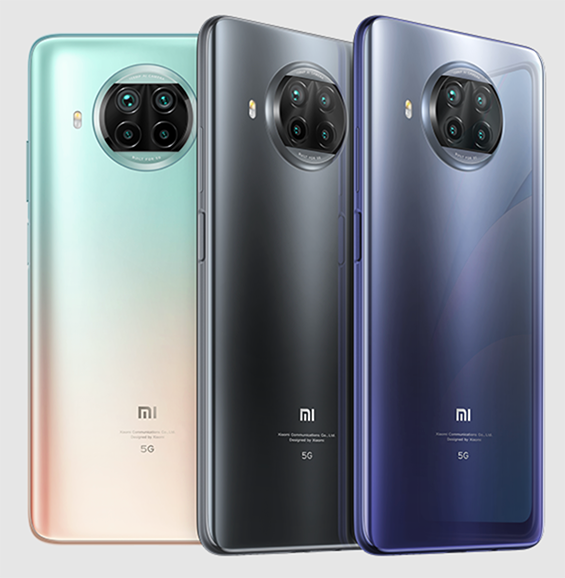
Xiaomi Mi 10i 5G
One of the most affordable 5G phones in India, the Xiaomi 10i also offers flagship-grade photography with its 108MP camera and supports 33W fast charging.

